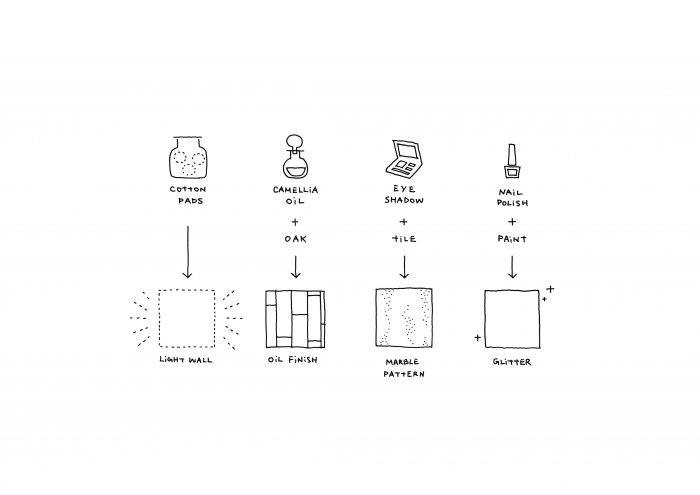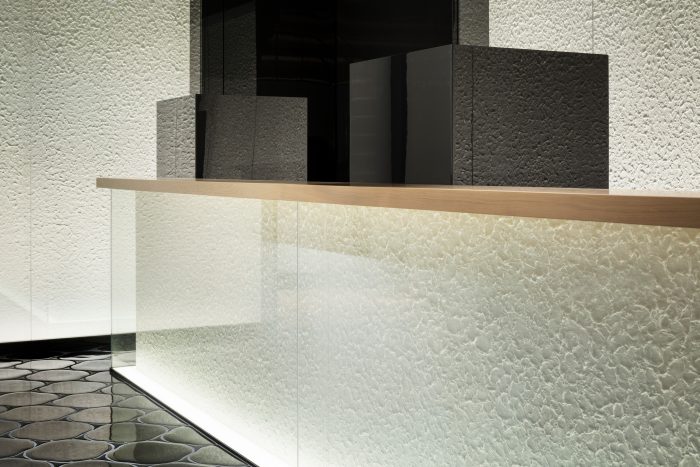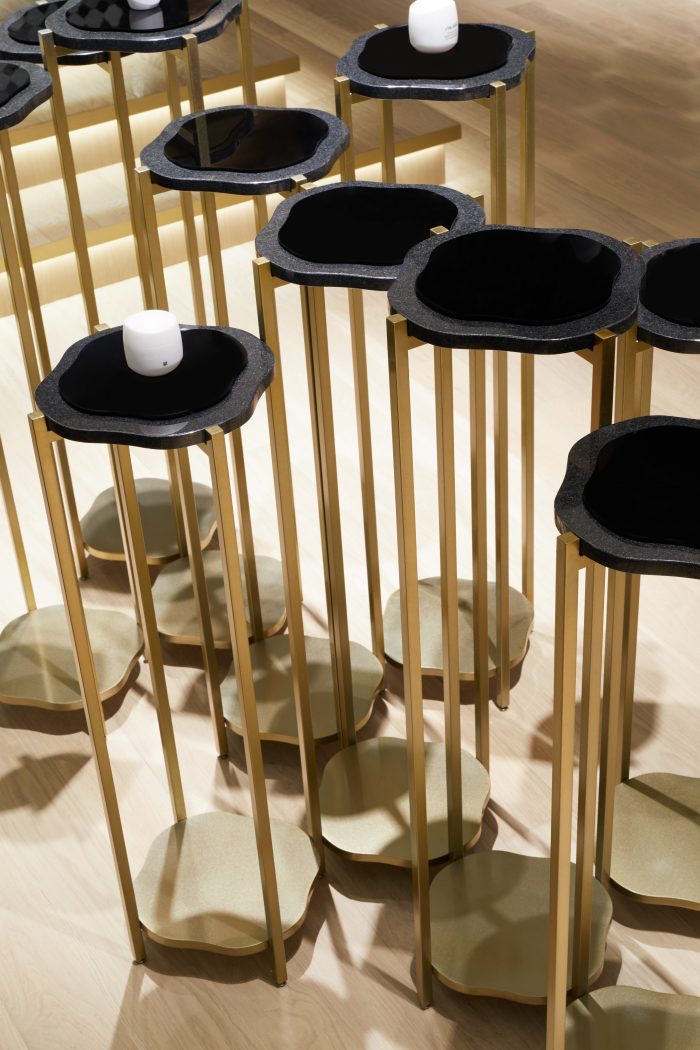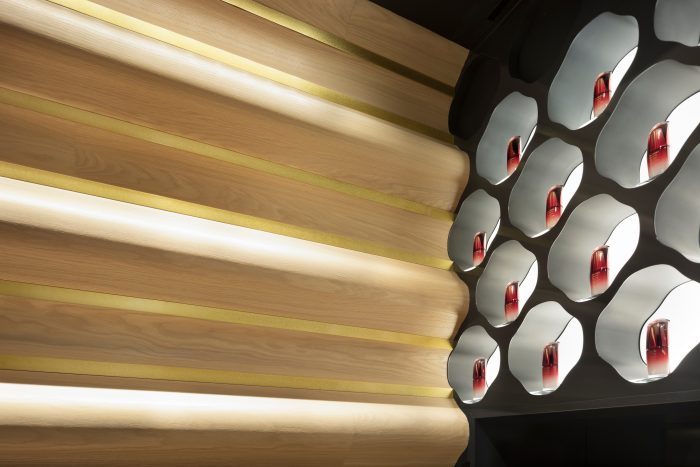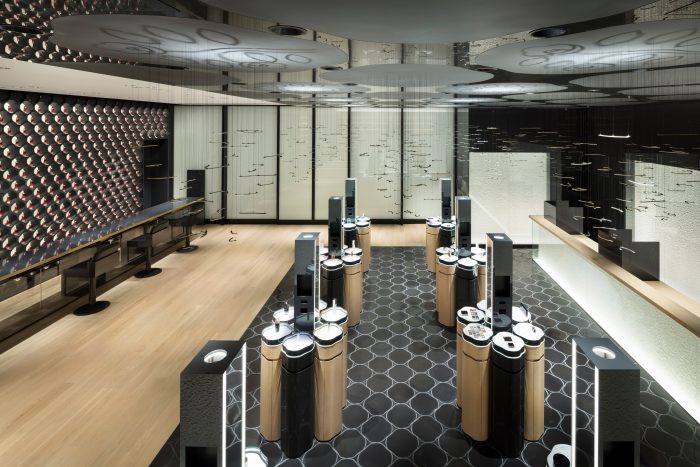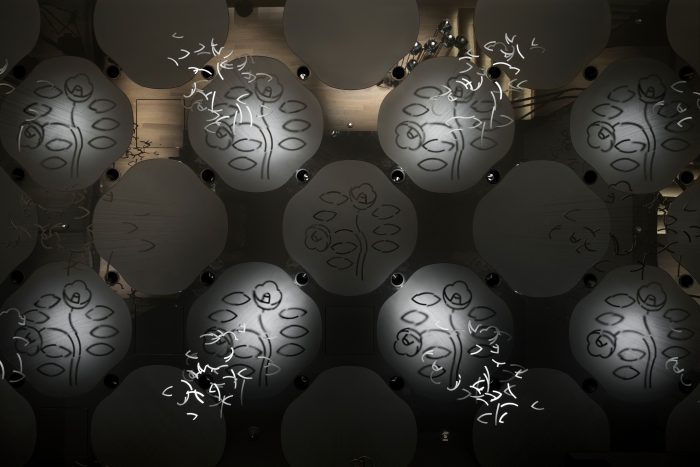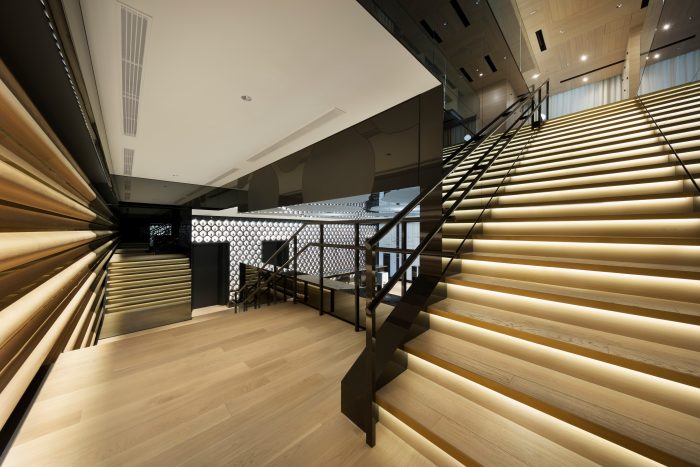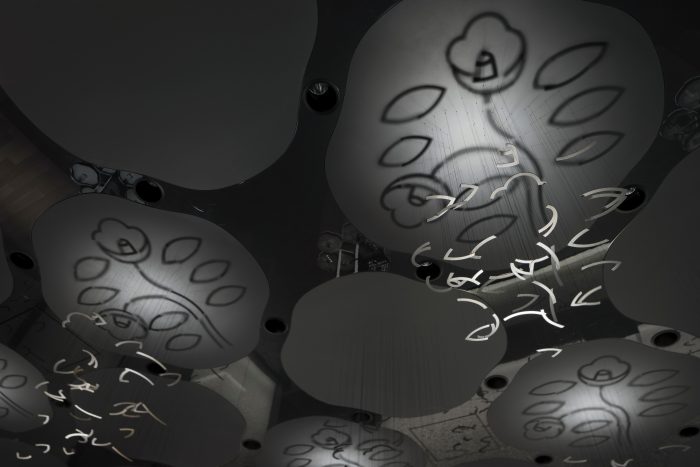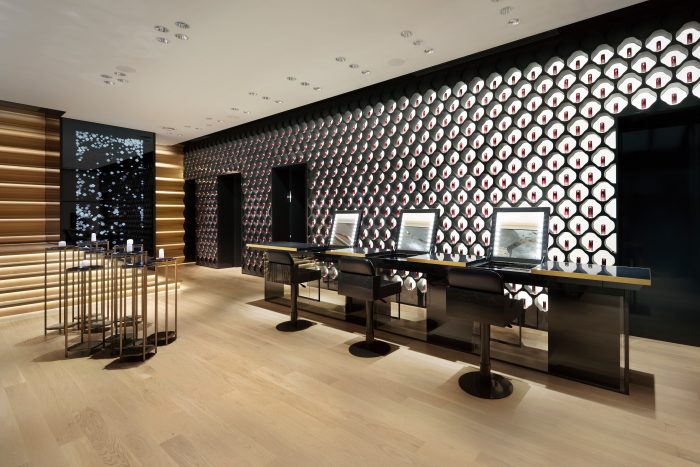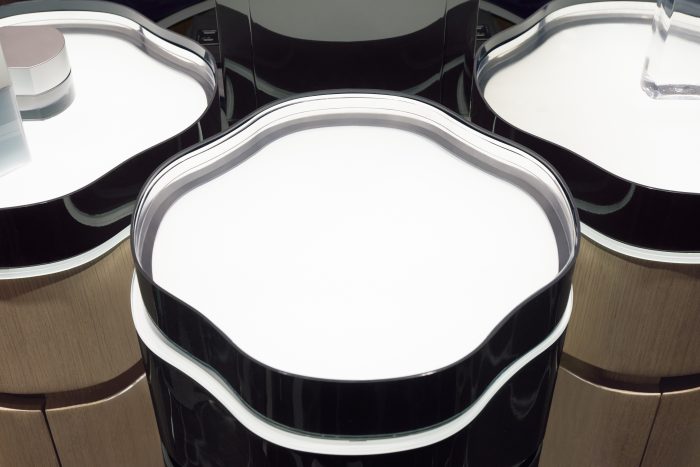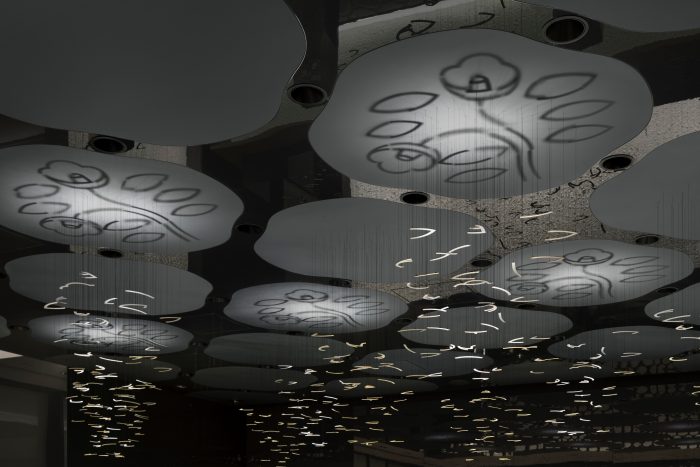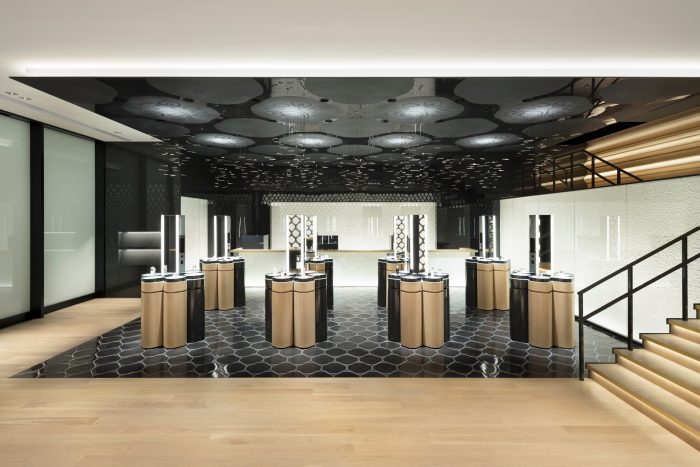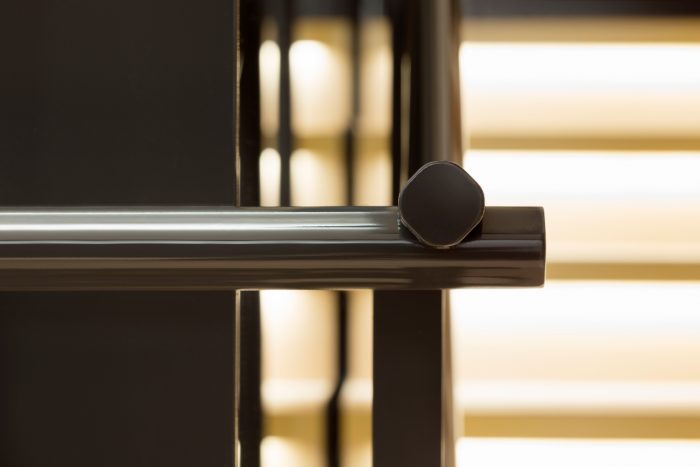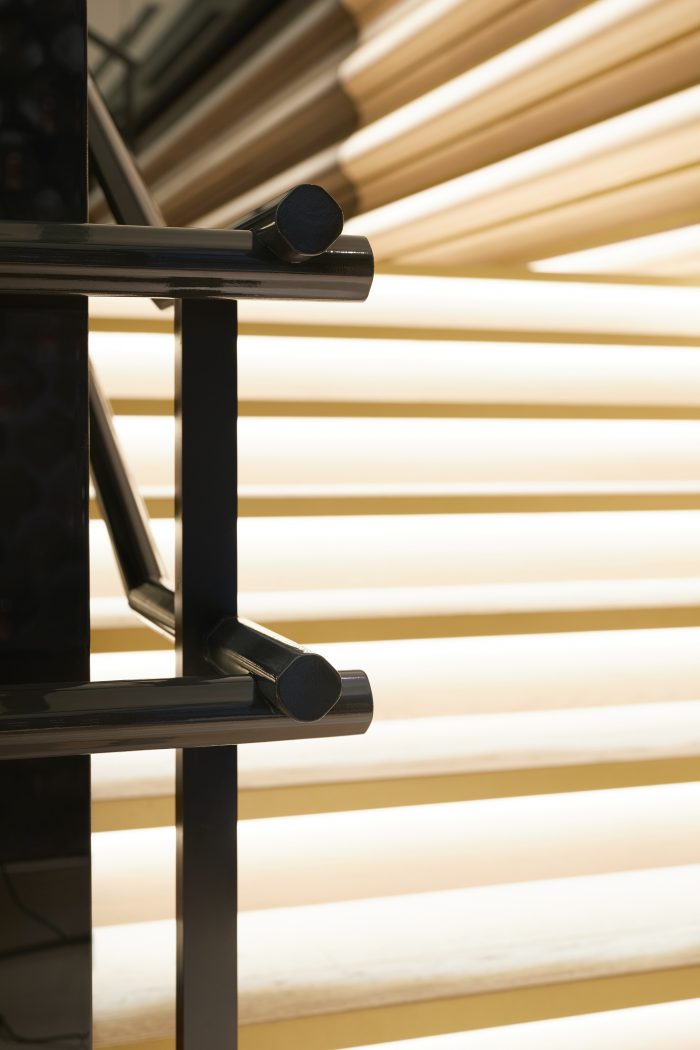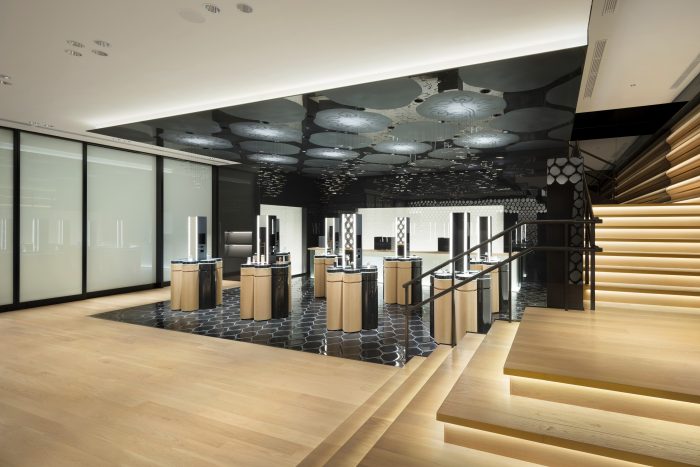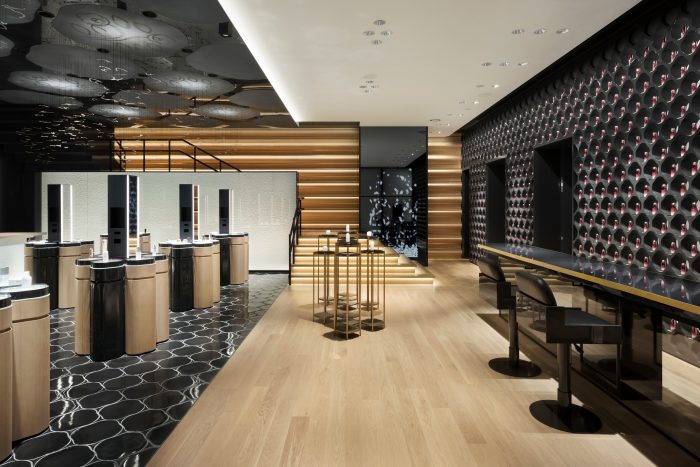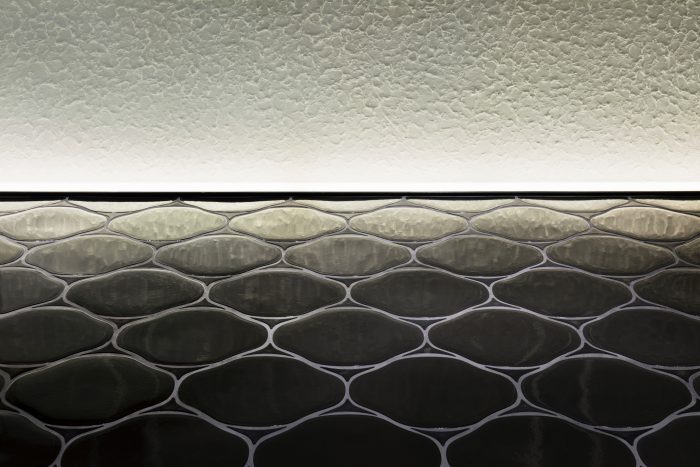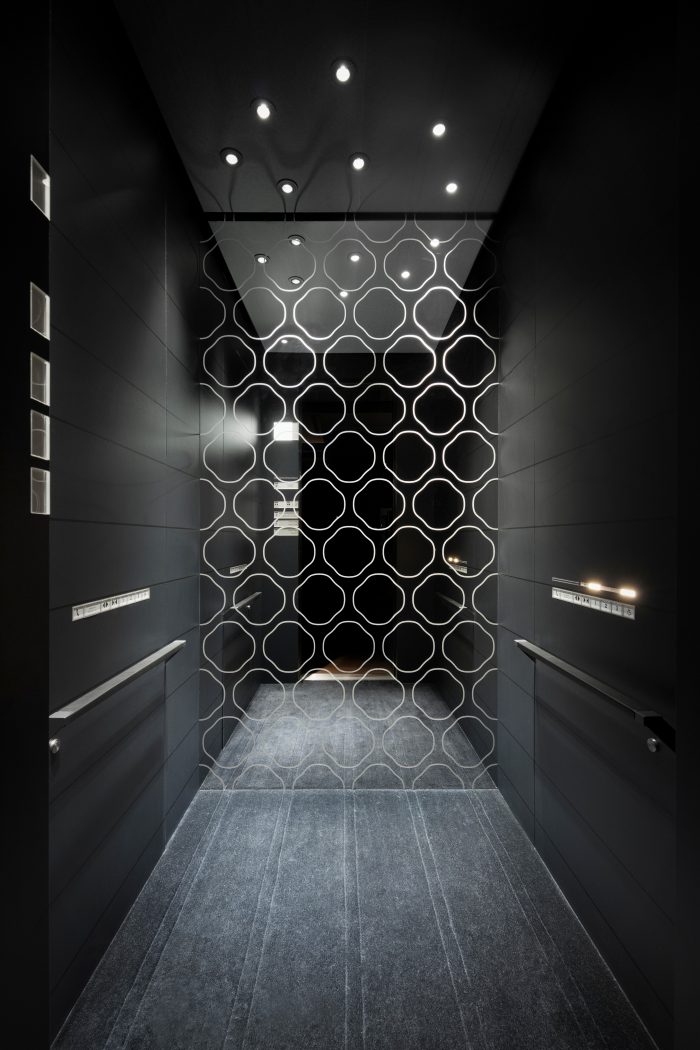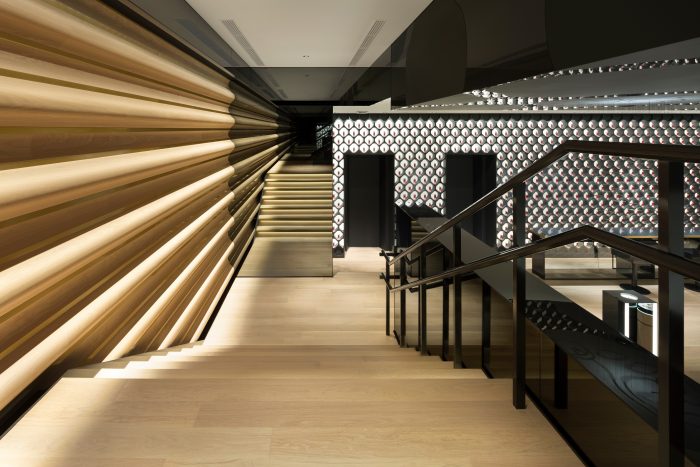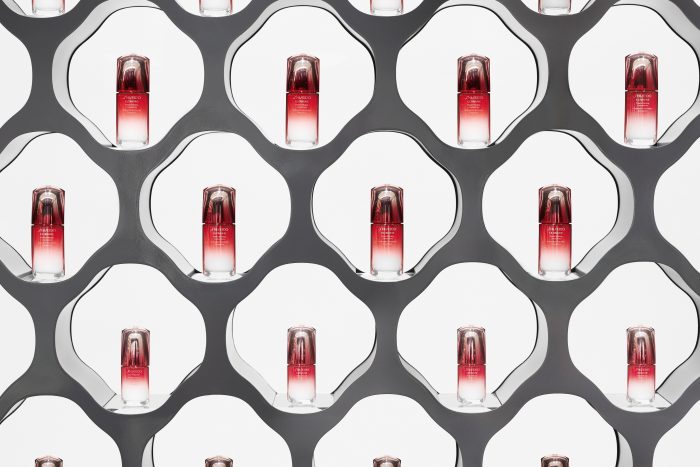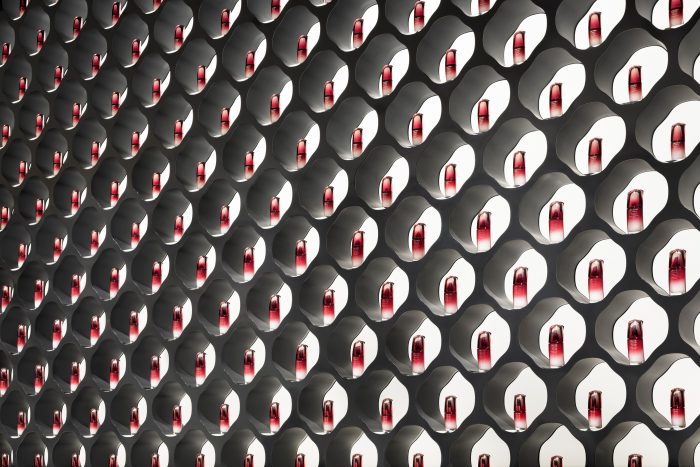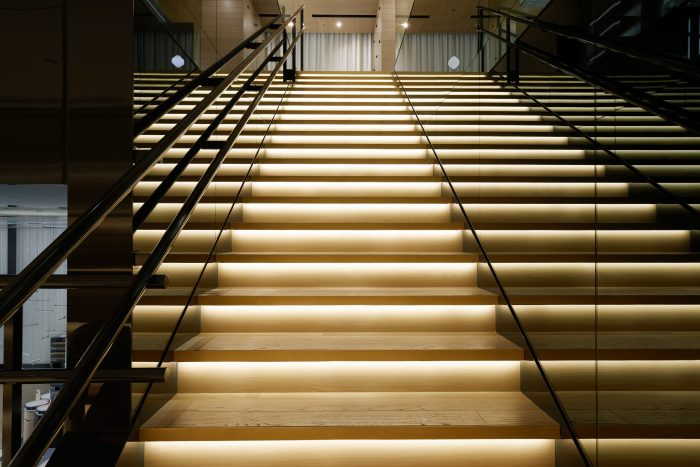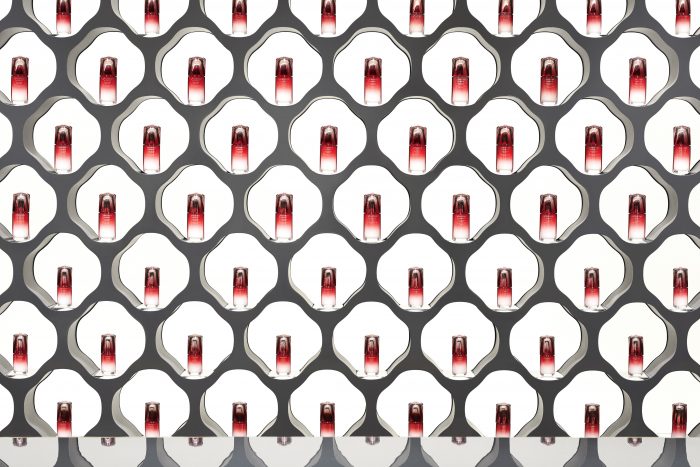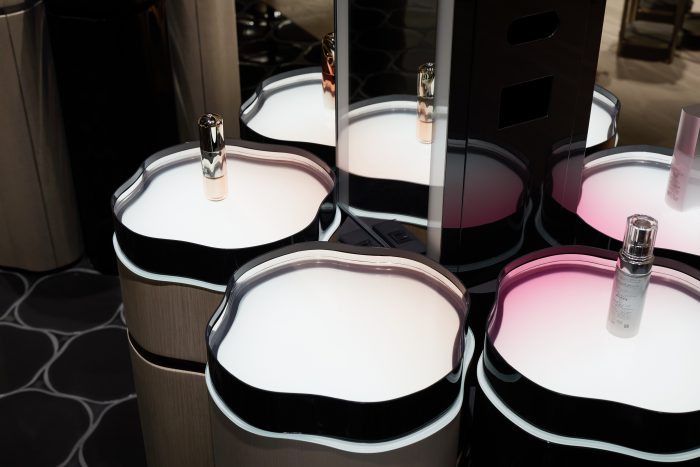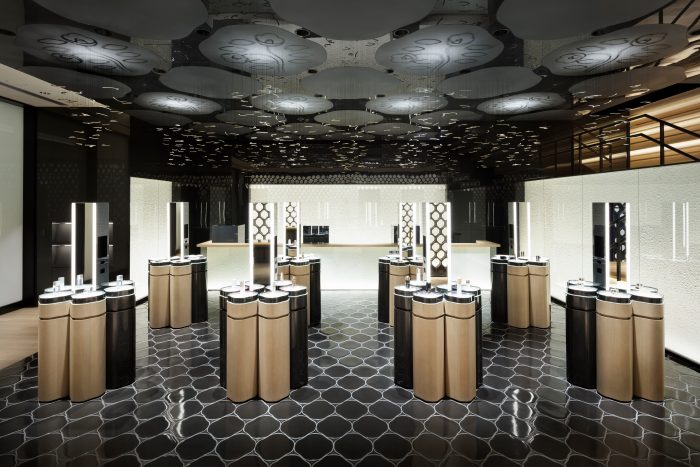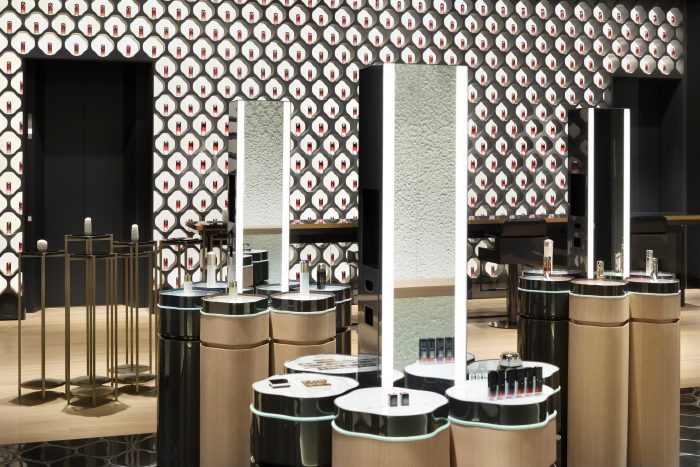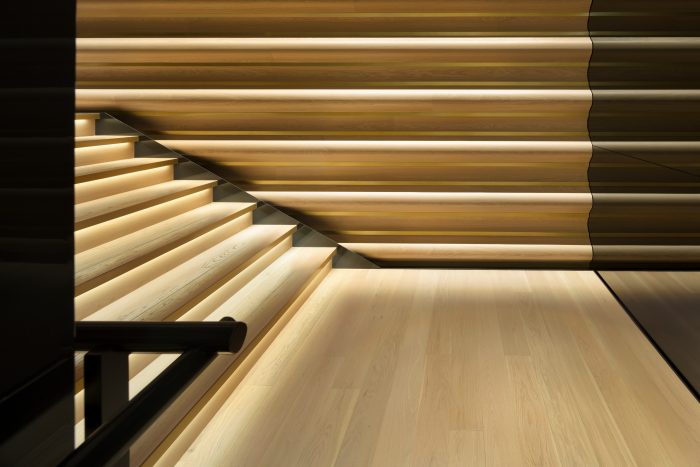日本最大的化妆品公司资生堂(Shiseido)的旗舰店改造项目始于1872年,当时它是日本在东京银座的第一家西式药店。
“资生堂商店”有四层,每层都有不同的功能和服务。
化妆品在一楼销售:一楼的产品是针对外国游客的,一楼还有一个护肤沙龙。
二楼是照相馆和美容美发沙龙,三楼是咖啡厅、活动空间和私人美容咨询室。
The renovation project of the flagship store of Shiseido, the largest cosmetics company in Japan, started in 1872 as Japan’s first Western-style pharmacy in Ginza, Tokyo.
“SHISEIDO THE STORE” has four floors, each serving various functions and services.
Cosmetics are sold on the ground and 1st floors: products on the ground floor are aimed at foreign tourists, and the 1st floor also houses a skin care salon.
There is a photo studio and a hair and make-up salon on the 2nd floor, and on the 3rd floor there is a cafe, event space and private booths for beauty consultations.
室内设计的主要理念是将室内建筑的共同元素与构成相结合。在准备墙壁或地板时,首先要涂上底漆,然后涂上几层油漆或抛光,最后涂上一层保护层。化妆也遵循类似的顺序。
首先涂上护肤品,然后涂上底漆和粉底,再涂上口红或眼影等颜色。这些流程上的相似性激发了设计师的灵感,他们利用资生堂的产品和相关材料,对空间进行翻新,将化妆品应用到店内的内部。
用薄薄的棉垫做成的纸铺在墙上;从底下安装灯具,使它发出柔和的光。
山茶油是资生堂的关键原料,尤其是在其护发产品中,它被应用于天然、未经加工的木材中,随着时间的推移,使其具有美丽的陈年光泽。
眼影是用化妆刷涂在墙上的,看起来像大理石,指甲油和天花板上的颜料混合在一起,发出一种微妙的闪光,捕捉不断变化的光线。
The main concept of the interior design was to integrate the common elements of interior construction and makeup. When preparing a wall or floor, first you apply the undercoat, then layers of paint or buffing, and finally a protective topcoat. Make-up follows a similar order.
First you apply skincare, then primer and foundation for the base, then touches of color such as lipstick or eye shadow. These similarities in process inspired the concept of renovating the space to apply make-up to the store’s interior using Shiseido products and related materials.
Paper made from thinly spread cotton pads was used on the walls; lit from underneath, it gives off a soft glow.
Camellia oil- a key ingredient at Shiseido, especially in its hair care products- was applied to natural, unprocessed wood, to give it a beautiful aged finish as time passes.
Eye shadow was layered onto the walls with make-up brushes to give a marble-like finish, and nail polish was mixed into the paint used for the ceiling art, giving a subtle shimmer that catches the shifting light.
像这样的隐藏的触摸源于日本的美感,是资生堂观点的恰当表达。
设计主题来自于茶花的剪影,这是资生堂自1915年以来的标志。主题的形式,每一个灵感来自日本传统工艺的技术,可以发现在整个空间:它出现在柱子的形式,类似于竹子的部分;作为剪纸风格的桃李纸工艺;编织成类似传统篮子的图案;就像传统的纸质hariko一样。
Hidden touches like these have their roots in the Japanese sense of beauty and are a fitting expression of Shiseido’s perspective.
The design motif has been derived from a silhouette of the camellia flower, Shiseido’s icon since 1915. Forms of the motif, each inspired by techniques from Japan’s traditional crafts, can be found throughout the space: it appears in the form of columns, resembling sections of bamboo; as cut-outs in the style of kiri-e paper craft; in woven patterns resembling traditional baskets; and modeled like traditional papier-mâché hariko.
最后,在大楼的窗户后面使用了窗帘。
传统的装饰结被称为“awajimusubi”,从远处看,它被绑在绳子的特定点上,形成茶花的轮廓。
awajimusubi结是日本传统的象征,象征着长久的纽带和联系,代表资生堂希望与客户建立持久的关系。
Finally, string curtains were used behind the windows of the building.
A traditional decorative knot called awajimusubi, was tied at specific points on the strings to form the outline of a camellia flower when viewed from afar.
The awajimusubi knot is a traditional Japanese symbol which stands for a long-lasting bond and connection, representing Shiseido’s desire to build an enduring relationship with its customers.
Design: Nendo http://www.nendo.jp/en/
Year: 2018
Status: Completed works
Type: Showrooms/Shops
Photography: Keta Tamamura



